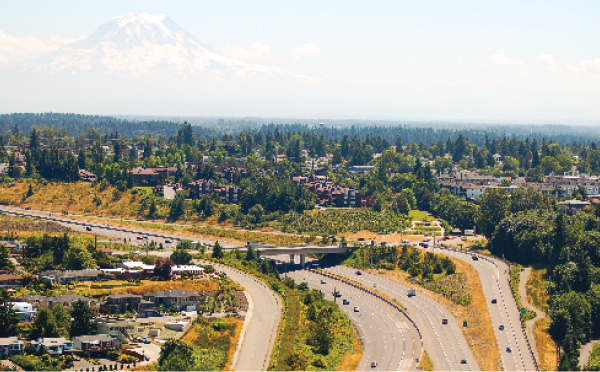Trends—August 2013

The Government is ‘Helping’ Again…
Transportation and logistics companies have a hard enough time navigating the twists and turns in today’s economic landscape without facing inertia from the executive branch. But states are strapped for cash, and lawmakers are trapped by special interests. Many are acting on impulse, then ducking for cover.
The Minnesota State Legislature’s recent decision to pass a 6.5-percent sales tax on warehouse services in an effort to balance the state budget have area companies concerned that the hike will push business away. Cutting costs remains a priority for shippers, so any action that inflates the total cost of doing business beyond what can be controlled raises a red flag.
Despite rampant industry opposition, and calls for a special legislative session to repeal the warehouse tax, Governor Mark Dayton is standing firmly behind the state’s decision. Calling the Republican-led effort a grandstanding stunt, he says: "The previous administration and Republicans put us into this hole, and now they are complaining about how we are getting out of it. Well, we’re getting out of it. We’re putting our accounts back in order. We have a balanced budget, and it’s going to be an honest budget."
The bill won’t take effect for another year, which keeps the door open for legislators to amend the tax. But the damage may already be done. There’s no guarantee the state will make changes, and retailers or manufacturers looking at expansion opportunities in Minnesota will view the looming impasse as a negative. Wisconsin and Iowa will use it to their own advantage to lure suitors away.

Washington State failed to pass a $10-billion transportation bill that would have funded road improvement projects through a 10.5-cent gas tax increase.
The nature of the appropriations is most problematic for Minnesota’s third-party logistics industry, which finds itself directly in the crosshairs of the new tax. The bill includes exemptions for both farmers and retailers. Governor Dayton is a member of the Minnesota Democratic-Farmer-Labor Party, which cut its teeth in the Depression era protecting farmer and labor rights. He is also the great-grandson of George Dayton, who founded Dayton Department Stores, the precursor to Target.
While some might question the "honesty" of the warehouse tax given these conflicts of interest, a clear disconnect exists between protecting labor rights and killing jobs. Third-party service providers will be at a competitive disadvantage, says the Minnesota Trucking Association (MTA).
"Deciding where to warehouse products is primarily based on cost and service considerations," says the MTA. "Adding 6.5 percent to the cost of Minnesota warehousing services would render them at a significant competitive disadvantage. In an industry with single-digit profit margins, absorbing the cost is unfeasible, as it would result in a profit loss."
Minnesota businesses aren’t the only ones concerned that legislative myopia and oversight are threatening competitiveness. Whether it’s balancing state budgets or getting down to nitty-gritty transportation planning details, drama is building across the country.
In Massachusetts, Governor Deval Patrick’s ambitious $1-billion transportation financing bill, which has been scaled down precipitously by both the state House and Senate, includes a veiled 6.25-percent tax on "tech services"—a hit that some observers argue will negatively impact industries such as healthcare and retail, which rely heavily on computer software services. It’s in the interest of improving transport infrastructure, but at what cost?
Pennsylvania faces similar issues. Its House and Senate are having problems reaching agreement on a $2-billion transportation package that would subsidize highway, bridge, and mass transit upgrades. Democrats believe more funding should be directed toward mass transit.
Texas legislators are haggling over how to appropriate a 20-cent tax on gasoline. Twenty-five percent of that revenue currently goes toward public education. One proposal on the docket would direct voters to approve a constitutional amendment to allocate fuel taxes solely for transportation needs.
Washington State, in the middle of its own budget battle, failed to pass a $10-billion transportation bill that includes a 10.5-cent increase to the gas tax after last-minute Senate opposition. Lawmakers there contend they need to first address policy changes for transportation projects before they tackle infrastructure funding.
In New Jersey, a fight is brewing over the passage of an employee misclassification bill. The Truck Operator Independent Contractor Act reclassifies both drayage truck operators and parcel delivery truckers as employees, not independent contractors.
Pro-business interests argue that the presumption of an employer-employee relationship will run trucks out of the state—which poses a major concern as Port of New York and New Jersey cargo volumes continue to grow and capacity shrinks.
The Teamsters and other labor groups contend that companies are shirking their responsibilities by avoiding taxes and not contributing to employee benefit obligations. Whether Governor Chris Christie, long a thorn in labor’s side, will sign off on the bill remains to be seen.
That states are wrestling with funding mechanisms amid budgetary constraints is not necessarily a negative. When President Obama signed the Moving Ahead for Progress in the 21st Century Act (MAP-21) in July 2012, it lit a fire under state legislators and transportation industry stakeholders to formulate freight transportation strategies. Assessing and prioritizing need is one matter; finding the money to execute these plans is another. That is the source of much contention.
Private sector interests across the supply chain must remain vigilant to ensure government action does not create industry inertia. Public-private partnerships have long been a favored strategy for advancing infrastructure projects; policymaking needs such collaboration even more now.
High-end Retailers Shop for New Outlet
As yet another indication of the changing retail landscape, high-end department store outlets are gradually supplanting traditional brick-and-mortar locations, reports Bloomberg Industries.
For example, 60 percent of Saks locations are now outlets, and all but two of the 15 stores it plans to open in the next two years will be discount centers. Nordstrom, meanwhile, operates 127 Rack outlets and plans to open another 17 by the end of 2013, according to Bloomberg.
Nordstrom Rack locations sell 40 percent more than the company’s traditional locations in terms of revenue per square foot. And expenses are lower at outlets, where shoppers don’t need to be enticed by fancy storefronts and amenities.
The trend is partly driven by recessionary consumer spending and the success of retailers such as Ross Stores and TJ Maxx. "These companies are serving entirely different customers who know they can’t afford the full-line merchandise, but still desire the brand," says Bloomberg analyst Poonam Goyal.
Price differentiation is a proven strategy that works well for high-end retailers, less so for middle-tier sellers, adds Goyal. Outlets physically separate brands and buyers, which allows consumers to pay more rather than chase cheaper options. From an inventory management perspective, retailers are better able to move outdated product without slashing prices, conditioning consumers to wait for discounts.
The growth of outlet stores, and changes in how retailers allocate inventory to meet demand, present new twists in evolving omni-channel fulfillment strategies.
Practice Makes Perfect
Attention to order metrics is paying dividends for companies that invest in the necessary talent, technology, and processes, according to a recent report by Tompkins Supply Chain Consortium.
"We are seeing a large increase in the number of companies using the perfect order metric compared to previous years’ data," says Bruce Tompkins, executive director of the Raleigh, N.C.-based consortium. The report, Distribution Customer Satisfaction Core Benchmarks, is based on a survey of respondents across eight industries, including apparel and footwear, electronics, food and beverage, and pharmaceuticals.
Among the report’s highlights:
- On-time delivery is on the upswing, with those leading the way capable of greater than 98.5 percent, compared to a historical average of 94.2 percent.
- The average order cycle time is three hours, but leaders are capable of shipping orders in less than two hours after receiving them.
- Order fill rates have shown a slight improvement, with a leading 98-percent fill rate in comparison to the average of 94.7 percent in previous years.
What is the Perfect Order Metric?
The Warehouse Education and Research Council defines a perfect order as:
- Complete
- Delivered on time
- Damage-free
- Correct documentation, pricing, and invoicing
The Perfect Order Index is a popular performance metric calculated by multiplying each of the four perfect order components.
Blimps Over Barrow
Polar bears. Northern Lights. Ice floes. Blimps? If necessity is the mother of invention, then Alaska is a logistics laboratory unlike any other. Given the inherent challenges shippers face delivering supplies to remote areas where road infrastructure is absent, state officials are looking at airships as a viable option.
The Alaska Department of Transportation, NASA’s Ames Research Center, and University of Alaska Anchorage recently sponsored the third-annual Cargo Airships for Northern Operations Workshop to discuss with industry and business leaders the feasibility of using cargo airships.
"Distance becomes a tyranny unless you can afford to spend the money to build ground transportation systems in every location where you want to go," says Ron Hochstetler, the workshop’s technical chairman.
Rural villages rely on airstrips and cargo planes to re-supply basic necessities. But the cost to build and maintain such infrastructure is often prohibitive, making airships a viable solution.
Dirigible transport offers myriad advantages. Airships can travel for weeks at a time, if necessary. They can land in remote locations, and require fewer on-the-ground resources compared to airplanes and landing strips. Large airships can conceivably carry very heavy freight while providing a more environmentally friendly transportation mode.
"The expansion of cargo aviation in Alaska can’t continue to depend upon building more runways and more airstrips to accommodate freight shipments," Hochstetler explains. "It becomes expensive and untenable from an economic and environmental perspective."
Workshop attendees share consensus that a prototype could be in service within a few years, with commercial applications soon to follow.
M&A Mega Deals Drive T&L Activity
W hile merger and acquisition (M&A) activity in the transportation and logistics sector is largely subdued due to economic uncertainty, infrastructure mega deals continue to drive value at the top end of the market, according to PwC US.
The second quarter of 2013 saw 31 transportation and logistics transactions worth $50 million or more, totaling $15.2 billion, compared to 51 transactions totaling $14.3 billion in the second quarter of 2012. Additionally, average deal size increased to $490 million in the second quarter of 2013, compared to $281 million during the same period in 2012.
While strategic investors represented the majority (61 percent) of transportation and logistics deals in the second quarter of 2013, financial investors have shown an increasing appetite for shipping and port deals, likely due to potential opportunities to improve performance within an over-capacitated mode.
The second quarter did see relative strength from Asian acquirers, who engaged in nearly half of all global deals in the second quarter of 2013 in an effort to pursue M&A strategies that consolidate local markets across modes. Additionally, while European dealmakers have stayed on the sidelines, that region, along with South America, seems likely to provide some larger infrastructure deals later this year, says PwC.
